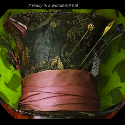|
hannibal posted:First I've seen of that - it reminds me of when you reduce color depth in images, and you'll see smooth gradients end up being stepped. (like you mention with JPEGs) Fair point. Baby steps into PI at this point, really. I worked through the trial license and I loved it enough to put down for the full copy today, but jeez... jeez... this is, unsurprisingly, an extraordinarily complicated program. I'm working with a lot of light pollution (goddamn LED streetlights) and am not looking for perfection at this point, mostly practicing tracking and following post-processing flows that other people have posted online, and was hoping to keep using DSS until I have better source images to use. Maybe I should just reverse my priorities and start learning to stack in PI, then move on to post-processing, and just scrap DSS altogether.
|
|
|
|

|
| # ? May 28, 2024 11:54 |
|
 I can’t tell you where in your workflow everything goes wrong, but the histogram shouldn’t look like that. In the TIFFs, does the continuous curve exist at all or are there gaps between discrete values?
|
|
|
|
Platystemon posted:
Ah! Good call, it's totally hosed up in the TIFFs too:  (space is just super bumpy, right?) Definitely something getting hosed up in DSS processing. Here's a histogram for one of the original RAW images - Much better looking, I think the blue shift is the LED streetlights but more what I would expect:  All right, gently caress it. I'll just bite the bullet and start working on learning how to pre-process in PI.
|
|
|
|
Yeah, I have seen DSS do some weird things sometimes, which I assume are from bugs in the program. Which is one reason I moved to PI. Check out the Light Vortex Astronomy tutorials. And I probably mentioned this within a page or two but if you're up for a book I can't recommend the book Inside Pixinsight enough. The second edition just came out. Getting a good workflow is really the key. The script BatchPreprocessing in PI gets you a lot of the way early on. Someday I will actually write up the process I am using... it's basically the one from Inside Pixinsight with some mods. I also deal with a lot of light pollution (near DC, Bortle 8-9 easy) but it is possible to do some great imaging with light pollution.
|
|
|
|
hannibal posted:Yeah, I have seen DSS do some weird things sometimes, which I assume are from bugs in the program. Which is one reason I moved to PI. Great to hear. Yeah, it's hard to complain about a free program that does an hour of work for me with pretty much no effort, but I might just have to pass on DSS for this stuff from here on out. I did buy a copy of the new edition of Inside PixInsight at your recommendation, actually, so I'll be reading that as well. I'm really excited for what it can do, and I'll definitely post the results here.
|
|
|
|
Sorry to spam the thread - now I'm looking for recommendations for an astro camera, more specifically for DSOs. I don't really have a price range in mind, specifically, but I'm currently using an unmodded Canon 80D and would like something that is at least as good (albeit more focused towards shooting DSOs). The Canon does a great job on planetary photography so I'll keep using it for that side of things. I keep looking around and am having problems finding cameras that don't have really lovely software or something like that, and I really don't know what's most important in astro-specific cameras anyways.
|
|
|
|
Golden-i posted:Sorry to spam the thread - now I'm looking for recommendations for an astro camera, more specifically for DSOs. I don't really have a price range in mind, specifically, but I'm currently using an unmodded Canon 80D and would like something that is at least as good (albeit more focused towards shooting DSOs). The Canon does a great job on planetary photography so I'll keep using it for that side of things. Are you talking about another DSLR or are you considering mono cameras? I shot with DSLRs for a while (and still do sometimes, I went Canon SL1 to 7D Mk II) and then moved up to an ASI1600MM Pro. I was also considering the QHY 163M. They have the same sensor and are both cooled mono cameras. Of course moving to a mono camera involves filters and changing your shooting methods a bit. I personally think modding DSLRs is for the birds and you might as well jump to specialized mono cameras.
|
|
|
|
hannibal posted:Are you talking about another DSLR or are you considering mono cameras? I shot with DSLRs for a while (and still do sometimes, I went Canon SL1 to 7D Mk II) and then moved up to an ASI1600MM Pro. I was also considering the QHY 163M. They have the same sensor and are both cooled mono cameras. Of course moving to a mono camera involves filters and changing your shooting methods a bit. I personally think modding DSLRs is for the birds and you might as well jump to specialized mono cameras. I'll move away from DSLRs, I think. I've got the Canon 80D for planetary imaging and that does great. I'm not against mono cameras, but I'd have to figure out the filters or get a filter wheel. Is there any reason to go with a mono over some of the newer color CCD cameras? For example, this one? Definitely more expensive than comparable mono cameras, but it saves the trouble of dealing with filters.
|
|
|
|
Golden-i posted:I'll move away from DSLRs, I think. I've got the Canon 80D for planetary imaging and that does great. Well, you will definitely need a filter wheel regardless if you wanted to take RGB photos (since you have to take one with each filter). One advantage with mono cameras is that you can begin to explore narrowband imaging. I have done a little with hydrogen-alpha and it's interesting and light pollution is much less of a factor. I have never read about that particular ZWO camera but one of my points was going to be to look at larger sensor sizes regardless of mono vs color, which you'll want for DSOs, and it looks like that one is APS-C so should be fine. Just don't get one of the cameras designed for planetary work because their sensors are usually tiny. You arguably get more sensitivity out of a mono camera since every pixel is being used for whatever color you're filtering, vs a color sensor having a Bayer matrix with different colors on each pixel. From here I would poke around at cloudynights.com, there's bound to be a thread about that particular camera and probably multiple people asking the same question you are. I usually just do a Google site search with my question and go from there. Keep in mind this becomes a significant investment - although I just looked and that ZWO you linked is pretty pricey too. For mono you're talking camera ($1k), filter wheel ($100 or so, maybe more if you get an 8-position, I did), and whatever filters you want (I went in deep and got LRGB, H-a from Astrodon and a couple of near-IR filters for planets - easily over $1k all together). But the flexibility and sensitivity you get is worth it, to me, if you're really getting that deep into imaging.
|
|
|
|
Thanks! Yeah, I went into this whole thing knowing that it's a pricey hobby. I'll do some more research into narrow-band imaging, and whether or not it's something I'll be interested in doing. Mono will be the way to go in that case! And I've been reading up on cloudy nights a bit as well, I think I just have a lot to learn before I can drop a lot of money on a new camera at this point, but thanks for the advice!
|
|
|
|
First total lunar eclipse that I've seen in a long time! Great weather for once. It was super cool seeing how dark it got. Idk if it's confirmation bias or what, but I felt like when it got close to totality, all the birds and critters in the neighborhood went crazy; owls hooting, dogs barking, bugs making weird noises. Hell yeah. Orion ED80 Orion Atlas Canon EOS M5 Single 15" exposure, minor lightroom tweaks
|
|
|
|
Wow, that's a really beautiful picture. Thank you for sharing. Would you say the telescope contributed to that picture the most? With a 15 second exposure, does the motorized mount help with that short of a shot?
|
|
|
|
That is a great photo. Lots of detail! Here's my contribution:  It was very windy here in MD (like, 50 mph gusts) so I think the seeing was pretty bad. I processed this a bit in PixInsight to try and bring out some of the details. Celestron 8" SCT Skywatcher EQ-6R Canon 7D Mk II 1 sec exposure @ ISO 1600 I also used my roll-off roof observatory for the first time!  I still have a lot to do to finish it up, but the roof opens and the scope is all hooked up. It was nice to do most of the imaging from inside considering the temps got down to teens here.
|
|
|
|
If any thread on this dying comedy forums site should be talking about this, it's this one: https://twitter.com/willgater/status/1087478475919900672
|
|
|
|
Internet Explorer posted:Wow, that's a really beautiful picture. Thank you for sharing. Would you say the telescope contributed to that picture the most? With a 15 second exposure, does the motorized mount help with that short of a shot? Yeah, the motorized mount is def needed for a 15 second shot on a 600mm focal length. Didn't have guiding on tho, which would be needed for longer. There is actually some trailing happening on the stars around it, but I did have the mount on lunar rate instead of sidereal rate.
|
|
|
|
Sexual Lorax posted:If any thread on this dying comedy forums site should be talking about this, it's this one: Whoa, that is super cool! Watched 4-5 of the videos, looks pretty conclusive to this untrained eye.
|
|
|
|
I went back through my data and didn't see anything, but that's hardly surprising since I was only taking one shot per minute at around 4:41UTC. I really wanted to do a longer exposure (~30sec) but my tracking was really off and I couldn't fix it. At -5F outside, the diodes on my AVX's handset couldn't change fast enough and it was absolutely impossible to read, so I mostly just had to eyeball my alignment. Instead, I took about 20 pictures at around 1 second each and stacked them, which gave it a kind of a weird, fake look, but also I still kinda like it: 
|
|
|
|
I had thick clouds for most of totality, but they eventually thinned enough that i was able to get a few shots. This is the best of the 9 that weren't half covered. Not really happy with the amount of sharpening I had to apply to not make it look like a fuzzy mess. Meade 6000 Series 70mm ZWO ASI178  Here's a bonus Copernicus Crater from months ago when I had clear skies. 
Prettypanda fucked around with this message at 00:06 on Jan 23, 2019 |
|
|
|
I've got a Celestron 8SE but thinking I might want to try my hand a bit at astrophotography. I understand the Nexstar mount, while it tracks, isn't appropriate for photography. C/D? Assuming it is not, what kind of mount should I be looking at that won't cost a huge fortune? I would like some sort of a go-to mount if possible. Also, is there an FAQ for astrophotography? Software to use and recommended CCD eyepieces?
|
|
|
|
slidebite posted:I've got a Celestron 8SE but thinking I might want to try my hand a bit at astrophotography. I understand the Nexstar mount, while it tracks, isn't appropriate for photography. C/D? The main issue with alt-az mounts (like the Nexstar) is that, since they don't move in the same axes as the sky, there is a rotation of the field as the mount tracks a spot against the sky. Equatorial mounts fix this by aligning their main axis with the Earth. However, it doesn't mean you can't image with an alt-az mount, you just have to limit your exposures, which you may have to do because of light pollution anyway. Check this thread for more detailed info. EQ mounts like the AVX and iOptron iEQ30 are your starting points in general. There are mixed feelings online about doing astrophotography with an 8" SCT on the AVX though - personally I think it's too much weight (tube plus camera) and so I moved up to a Skywatcher EQ6-R. (You'll also have to 'defork' your SCT to put it on an EQ mount, but I think that just involves buying a dovetail bar) I posted some good links upthread, click here. Reddit r/astrophotography is good and Cloudy Nights has an entire subforum for beginning imaging. (make generous use of the search)
|
|
|
|
I have a question about positioning in these Lunar eclipse photos to deal with a friend who's recently become a flat Earther (I know... I know...). We've been a close friend for most our lives and he recently taken a turn in the conspiracy direction. He interviewed super flat Earther spokesman Mark Sargent on a youtube show he's been doing which led to him believing in it in spite of little education on the matter. He posted about how in a photo he took and other photos/streams he saw Mare Crisium, or the "big circle at the top of the Moon" as he called it, was in different positions. Like it'd be at 2 o'clock on one, then 7o'clock on another. He then used a crude example of holding an orange (Earth) and a bottle cap with a dot on the top (Moon) and when moving it around the orange that dot doesn't change position. He claimed that would only change position if the Earth was flat... His pic is from Nebraska and the one he was comparing was in Seattle as well as different Youtube streams. He has no clue about orbital mechanics for one thing. I told him that depending on how a camera is mounted on a telescope eyepiece the rotation of the image can change. For photos just taken by hand held cameras looking up, things don't change that much by latitude differences do they, assuming the camera is held level then pointed up? Are there any good programs that can model the view of the Moon from different standing points on Earth? I'm thinking of getting him KSP to learn more about orbital stuff. It was cloudy where I am so I missed most of the eclipse but wish I had gotten my telescope out to look closer during clear moments.
|
|
|
|
Since you have no frame of reference you have literally no idea how a camera was orientated taking the photo so any point on the surface could be anywhere "o'clock". It's very common as I'm sure you know to have a camera not exactly perpendicular to the horizon. Ask him how long haul aircraft fly between distant continents or ships navigate. If the earth wasn't a sphere(ish) it wouldn't work. Also ask him if you can just fly off into space if you go over the "edge" in an airplane or something. You'll have to dumb something down to a basic level to hope they grasp, if they think the earth is flat talking about orbits will be over their head. People that truly believe in flat earth in this day and age make me weep for humanity.
|
|
|
|
Ask them to explain the curvature of the earth.
|
|
|
|
You might want to take it to the Space thread in SAL, which is far more active. Cameras hooked up to telescopes can often produce an image in whatever orientation you want. The camera will be rotated so its rectangular sensor frames objects well. For a round subject like the Moon, it may be as simple as “the camera was left in the position when I imaged the Orion nebula last night and orientation did matter” or “I wanted the cord to come out the bottom because why not”? So let’s assume there are trees or whatever and orientation can be established from that. Most people are more familiar with the concept of the Sun rising at different times in different cities. Say the Moon is rising in San Francisco. At the same time, it will be setting in Istanbul (roughly speaking; it varies). The Moon’s west edge is west no matter where you are. At the rockies, the Moon is on the eastern horizon and the west edge is up. At the Caucasus, the Moon is on the western horizon and the west edge points down. A similar thing happens with latitude and the north/south edges of the Moon. On the same longitude, at the same time, a person in Europe can see the south side of the Moon near their southern horizon while a person in South Africa sees the north side of the Moon close to their northern horizon. The orange/bottlecap example is so bad I won’t even attempt to fix it. How about this: find a large sphere. “Stand” a phone on its side nearest the camera on one side of the ball and point it at some distant object. Snap a photo, making sure to get a portion of the ball in the foreground. Now stand the phone on the other side and snap a photo of the same object from that perspective. See how the distant object (and the rest of the world) appears to rotate if the ball horizon is down in both photos. Spooky. AzureSkys posted:Are there any good programs that can model the view of the Moon from different standing points on Earth? I'm thinking of getting him KSP to learn more about orbital stuff. Stellarium is a planetarium program can do this but I sense it’s not what you really want. It’s not meant to zoom around across the Earth’s surface. It just shows you the sky at a location and time of your choosing. Platystemon fucked around with this message at 16:44 on Jan 31, 2019 |
|
|
|
AzureSkys posted:to deal with a friend who's recently become a flat Earther Science didn't get your friend into that hole, so science isn't going to get him out, despite it being a very secure ladder standing right behind him that he can use if only he takes the effort to turn around and climb it. Instead, try the following, and if you lose that friend, know that you only lost someone who's only one bad headache away from trying to convince you to breathe underwater with him so you can find out what really happened to Atlantis. "People figured this elementary poo poo out two thousand years ago." "If you gently caress up something this simple, it calls into question your ability to make decisions in every other aspect of your life." "I dare you to bring this up at your next job interview." "This makes you sound as dumb as a monkey loving a football."
|
|
|
|
I can kinda admire the skepticism of questioning the most basic fundamental aspects of our world, especially things that we take for granted because they aren't obvious in everyday life. It's a shame that it's aimed at basic science instead of actual problems. https://www.youtube.com/watch?v=G8cbIWMv0rI
|
|
|
|
Platystemon posted:You might want to take it to the Space thread in SAL, which is far more active. Those are ideas I was looking for so I'll pass that on to him. Thank you! He just recently decided on the flat Earth thing so hopefully there's still room for discussion. What finally convinced him is a clip from a National Geographic thing where they reused the same birds flying in two different scenes... So anything from official or big channels is suspect and fabricated in his view. He does like simple home experiments so if I can give him a few to try maybe it'll help and he has some good camera equipment. Yeah, it's pretty much futile, but I was hoping some specifics on camera use for space objects might help him. I've gone over most the basics a few times and rather than pursue the science he's more interested in continuing to ask questions circling his view that reality isn't what we've been told instead of actually reaching conclusions due to the evidence. I'll explain something and he'll just move onto a different subject It's been sad to see, but he's still a good friend.
|
|
|
|
https://www.youtube.com/watch?v=h714VOr-6nY The sky only makes sense on a spherical Earth.
|
|
|
|
Zinjnok posted:Here's a bonus Copernicus Crater from months ago when I had clear skies. That's an amazing shot.
|
|
|
|
AzureSkys posted:What finally convinced him is a clip from a National Geographic thing where they reused the same birds flying in two different scenes... That sure is something. That being said it is unlikely that he’ll crawl out of the conspiracy hole willingly, but this is a good place to start: https://youtube.com/watch?v=Hug0rfFC_L8 E:I know the rich people argument here doesn’t really work for flat earth conspiracy debunking but hopefully it can stop him from going further down the hole. CrazySalamander fucked around with this message at 01:17 on Feb 2, 2019 |
|
|
AzureSkys posted:I have a question about positioning in these Lunar eclipse photos to deal with a friend who's recently become a flat Earther (I know... I know...). We've been a close friend for most our lives and he recently taken a turn in the conspiracy direction. He interviewed super flat Earther spokesman Mark Sargent on a youtube show he's been doing which led to him believing in it in spite of little education on the matter. Is he familiar with Eratosthenes?
|
|
|
|
|
Flat earth is so silly. Everyone knows the earth is really hollow and inside out, and the stars we see at night are cities on the other side of the world. If you tunnel down far enough where would you end up though?
sadus fucked around with this message at 05:31 on Feb 4, 2019 |
|
|
sadus posted:Flat earth is so silly. Everyone knows the earth is really hollow and inside out, and the stars we see at night are cities on the other side of the world. If you tunnel down far enough though where would you end up though? You can't tunnel too far because outside our eternal prison is the hellscape, a land of fiery rock and incredible pressures which destroy men and gods alike. Only the sacred arts can allow you to refine your spirit until you can pierce the heavens. More seriously, good luck convincing people about reality as observed by instrumentation. It's a hard road.
|
|
|
|
|
Convince your friend that the Earth must be round because otherwise where would all the Vril be? Really though, being a flat earther should be legitimate grounds for an intervention.
|
|
|
|
|
Drone posted:Really though, being a flat earther should be legitimate grounds for an intervention. I'm largely of the opinion that being a flat earther should be legitimate grounds for being deprived of oxygen and/or put into a rocket and shot into the loving sun, but I'm also a sonofabitch so take my recommendations with a grain of salt. AstroZamboni fucked around with this message at 01:28 on Feb 4, 2019 |
|
|
|
AstroZamboni posted:I'm largely of the opinion that being a flat earther should be legitimate grounds for being deprived of oxygen and/or put into a rocket and shot into the loving sun, but I'm also a sonofabitch so take my recommendations with a grain of salt. If you're going to put them in a rocket it would be more cost effective to just bring them back down once they saw for themselves and admitted they were idiots.
|
|
|
|
Impressive bit of amateur astronomy here; someone on Reddit managed to detect an exoplanet transit: https://www.reddit.com/r/space/comments/amv6k4/i_detected_the_transit_of_exoplanet_xo2b_from_my/ I honestly had no idea this was in the realm of possibility even for high end hobbyist equipment.
|
|
|
|
Looking forward to that planet being named Azzkicker7283.
|
|
|
|
|
ol qwerty bastard posted:Impressive bit of amateur astronomy here; someone on Reddit managed to detect an exoplanet transit: https://www.reddit.com/r/space/comments/amv6k4/i_detected_the_transit_of_exoplanet_xo2b_from_my/ Hell, amateurs have been DISCOVERING exoplanets. I think the smallest scope used to actually detect a previously unknown exoplanet was a C8. When the first known exoplanet was discovered in the nineties (51 Pegasi b), I had already been doing amateur astronomy for a few years. When I first got interested in the subject, "how are we ever going to detect these things" was a hot topic on the bleeding edge of the frontier. At the time most comets were also discovered visually by amateurs. In the 25 years I've been doing this poo poo it's gone to all the comets being discovered by automated sky surveys and loving exoplanets being found with C8s. What a world!
|
|
|
|

|
| # ? May 28, 2024 11:54 |
|
Dick Trauma posted:That's an amazing shot. Thanks! I've only been doing this for around a year and I'm still amazed out how much color is out there that we just can't see normally. I've been going back over old data since its been over a month since I had a clear night. This is just 20 minutes of the Rosette Nebula I took back in December. 
|
|
|
































